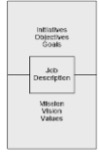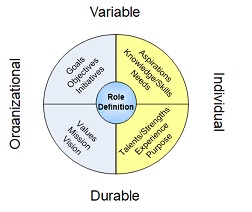- Home
- About Us
- The Team / Contact Us
- Books and Resources
- Privacy Policy
- Nonprofit Employer of Choice Award

 Marcella is the vice president of human resources for a large college system of more than a dozen institutions, with students on more than 60 campuses across the state. Her department provides centralized services to all campuses. She’d brought me in to review their performance management and onboarding processes. I started by sending her an email:
Marcella is the vice president of human resources for a large college system of more than a dozen institutions, with students on more than 60 campuses across the state. Her department provides centralized services to all campuses. She’d brought me in to review their performance management and onboarding processes. I started by sending her an email:
Please send me all the materials you have that you share with new hires when they are onboarded that explain your expectations of them.
I finished reviewing the 38 pages of policies, procedures, directives and other material that she’d sent and was ready to send a second email. I waited a week and wrote:
Thanks for getting your materials to me. Could you now please send me all the materials you have that show your staff what they can expect from the organization?
I waited a week. When I didn’t get a response, I sent another email. Marcella responded saying:
Sorry. I meant to get back to you sooner, but we don’t have anything written down that shows staff what they can expect from us.
Her response told me that the organization had given a great deal of thought to what they expected from their people. It also told me that what their employees wanted from the organization was, at best, an afterthought.
Process, policies and procedures
Marcella’s situation is not unique. Many organizations painstakingly outline what is expected of new hires and long-time staff alike. Onboarding processes are devised, policies and procedures manuals are reviewed, and job shadowing is arranged, all in an effort to let employees know what is expected of them.
When done successfully, onboarding and human resource practices achieve the objectives they were designed to meet: informing employees of their obligations to the company who is paying for their service. These practices clarify individual responsibilities and accountabilities. The new hire knows what they are expected to accomplish and who needs to know.
When it comes to performance reviews, managers are generally very good at developing job descriptions that connect the organization’s long-term mission, vision and values with its goals, its immediate objectives and any pressing initiatives (Figure 1). Again, the job description details what is expected from the employee and development plans are typically set with the organization’s needs in mind.

Figure 1: Job Descriptions & Organizational Factors
But are these processes as successful as they could be? Is there more to successful onboarding and performance reviews than ensuring that the organization has made its expectations clear? Should the employee expect that their employer will also take their needs into account?
Leaders frequently tell us that, in today’s workplaces, their people are their single greatest asset. They remind us that the counsellors who support our community’s families, the health nurses that conduct community clinics, the actors and directors who create community entertainment, and the managers who support their staff represent the organization’s most important means of achieving their organizations raison d’être. In short, effective management of their personnel is a key success factor.
Hopes and dreams matter
There is an abundance of current research on the attraction, retention, and engagement of human capital. Strengths-based approaches to the development of people are particularly well-correlated. People are the primary force behind organizational productivity and client satisfaction, so it stands to reason that an organization’s leadership group would want to do everything they can to create the conditions that allow their people to excel.
Yet in many organizations, little emphasis is placed on understanding the employee’s life purpose, talents, and aspirations and taking those factors into consideration as part of the job design process. While many who work in the nonprofit field do not have a formal career/life plan written out, most can tell you about their hopes and dreams in their work. They can tell you about their talents, strengths, and experience and how those factors have influenced their purpose. They can also tell you about their current professional needs, the knowledge, and skills they want to develop and their aspirations for their immediate future. Figure 2 depicts how all of these elements come together.

Figure 2: Career Plans & Individual Factors
Supervisors will work diligently with their direct reports to meet program outcomes or provide better client service or offer new programs and services. In some instances, the staff person’s career ambitions are considered. These ambitions may be formalized, eg. in a succession plan document, or they may be informally stated as part of a performance review or more general discussion pertaining to “what the future holds” for the staff person. Yet typically, little time is spent exploring how an individual employee’s needs might be met by the organization in the context of the organization’s mission, vision and goals.
The key to engaging human potential lies in understanding that organizational requirements and individual needs are complementary and that roles for people can be developed to reflect this reality. Truly satisfied and productive employees successfully meet both their personal needs and those of the organization. They understand what the organization expects of them, and they believe their professional ambitions are being addressed.
Some researchers have suggested that up to 90% of an individual’s potential is never leveraged by their organization. Why? For the most part, the answer lies in the fact that our job descriptions do not embody the totality of our capabilities. The reality is that most organizations do not stop to consider how they might incorporate the fullness of their people’s purpose, experience, knowledge, and aspirations for the betterment of the clients and communities it serves. We are much more than what our organizations ask of us.

Figure 3 brings together the needs of both parties. Taken together, the organization’s job description and the individual’s career/life plan can be seen as their role definition. Jointly defining the role addresses both organizational and individual needs while taking into account both long-term considerations that are durable over time and aspects of the relationship that are likely to vary in the short-term.
When people are valued in an organization, the organization’s mission, vision, values, goals, objectives, and initiatives aligns with the career purpose, experience, needs, knowledge, skills and aspirations of the staff that work there. Individual roles are defined to encompass both their job description as well as their current abilities and future focus.
Marcella doesn’t need to develop 38-pages of material with each staff person to better understand what they require. She and her colleagues simply need to have good communication channels in place, and then find ways to blend individual hopes with organizational needs.
Bill Scott BSW, MBA is a skilled facilitator, management consultant and speaker who helps clients create learning opportunities that enhance workplaces. Based on his unique blend of business and social services experience, he emphasizes the development of practical, hands-on knowledge and skills that can be applied immediately. He specializes in working with organizations that create “social profit.” He is based in Surrey BC, with his wife Cindy, daughter Keely and their mild-mannered rescue dog, Jessie. Contact him, bill@valuingpeople.ca.